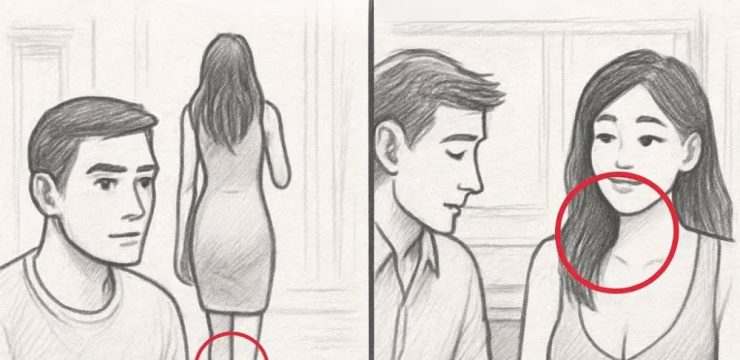Why do so many women cross their legs when sitting? It’s a posture we see often—in offices, restaurants, public transit, and even in media. While it might seem like a casual or instinctive movement, this simple gesture carries deeper psychological, cultural, and social meaning that reveals more than most people realize.

Cultural and Social Influences
To understand the leg-crossing habit, we need to look beyond the surface and into the cultural norms that shape how women are taught to sit. Historically, society has placed great emphasis on women’s posture as a symbol of femininity and elegance. In 18th-century Europe, for instance, art and etiquette books showcased women seated with legs crossed as the ideal of grace and modesty. It was considered “proper” and reinforced gender roles that emphasized restraint and delicacy.
Fast forward to today, and although gender roles are evolving, remnants of these cultural expectations still linger. In Western societies, leg crossing is often seen as ladylike or polished. Meanwhile, in some Eastern cultures, this posture may be considered disrespectful or inappropriate, especially in formal settings. This shows just how much our environment and upbringing can influence what seems like a simple physical action.
But this posture isn’t just about social conformity. It’s also a reflection of fashion and modern media. From magazine covers to red carpet poses, crossing legs is often portrayed as attractive, controlled, and sophisticated. Over time, these visuals become part of how many women are socialized to carry themselves in public spaces. However, the pressure to maintain these “graceful” poses may come at a cost—especially if they feel forced to prioritize appearance over comfort.
Psychological Reasons Behind the Posture
From a psychological angle, the decision to cross one’s legs can be linked to emotional states and personality traits. In some cases, it can signal confidence, poise, or control. In others, it might indicate insecurity, discomfort, or a need for emotional self-protection. For many women, crossing their legs creates a subconscious barrier between themselves and others—an act of creating personal space or asserting boundaries in a social environment.
Psychologists often analyze body language as a form of nonverbal communication, and leg posture is no exception. A tightly crossed leg position might indicate nervousness or anxiety. In contrast, more open or relaxed leg positions may suggest comfort, openness, and trust. These subtle cues can say a lot about how someone is feeling without them uttering a single word.
There’s also the concept of mirroring, a nonverbal behavior where people subconsciously mimic each other’s posture to build rapport. If a woman crosses her legs toward someone during a conversation, it could signal interest and engagement. If she turns her legs away, it may suggest the opposite—disinterest, discomfort, or a desire to withdraw.
The Role of Nonverbal Communication
In both professional and casual settings, body language matters. The way a woman sits can affect how others perceive her competence, authority, and confidence. For instance, sitting with crossed legs and a straight back might communicate sophistication and control. However, in some high-stakes environments like job interviews or boardrooms, it may also be interpreted as reserved or overly formal.
On the other hand, sitting with uncrossed legs and feet planted firmly on the ground can send a message of confidence, openness, and authority. Social psychology studies have shown that people often make snap judgments based on nonverbal cues, and leg posture is one of the most frequently evaluated—even if we don’t always realize it.
The challenge is that these interpretations can vary greatly depending on the observer’s background, gender, and cultural lens. What one person sees as composed and refined, another may view as stiff or closed-off. This highlights the complexity of nonverbal communication and the need to avoid assumptions based solely on posture.
How Leg-Crossing Affects Social Perception
Though leg-crossing might seem like a personal choice, it’s often shaped by societal expectations—and those expectations carry consequences. When women cross their legs, they may be unconsciously performing a role that aligns with traditional ideals of femininity. Unfortunately, this can reinforce stereotypes that link posture with traits like delicacy or submissiveness.
In the workplace, these perceptions can become problematic. A woman who chooses a more “open” or assertive posture might be seen as confident and capable, while one who sits with her legs crossed might be interpreted as reserved or passive—even if that’s not the case. This points to a larger issue: body language, including leg-crossing, can affect how women are evaluated by colleagues, superiors, and even peers.
That’s why it’s important to question these biases and recognize that posture is not a reliable measure of personality or professionalism. Encouraging women to sit however they feel most comfortable—without fear of being misjudged—can help challenge outdated norms and promote a more inclusive understanding of body language.
Rethinking the Gesture
As society continues to move toward gender equality, it’s time to reevaluate the meanings we assign to everyday behaviors like crossing one’s legs. Rather than assuming it reflects a woman’s level of class, confidence, or capability, we should recognize it as a personal choice—one that may be influenced by comfort, habit, cultural background, or mood.
In the end, the way a woman sits is just one piece of a much bigger picture. While leg crossing may seem trivial, it offers insight into how deeply social conditioning shapes behavior—and how even the smallest gestures can carry hidden weight. By fostering greater awareness and challenging outdated perceptions, we take a small but meaningful step toward allowing all individuals to express themselves freely and authentically.





